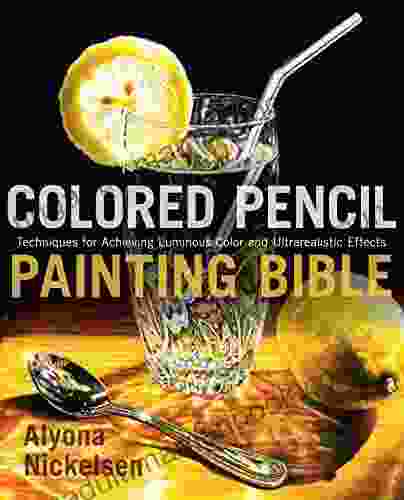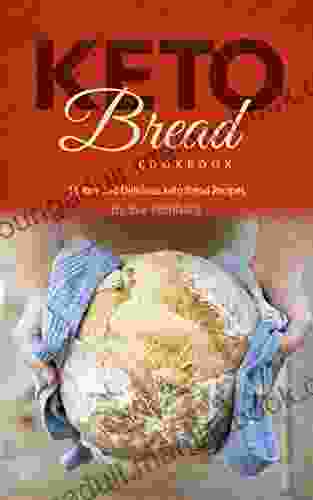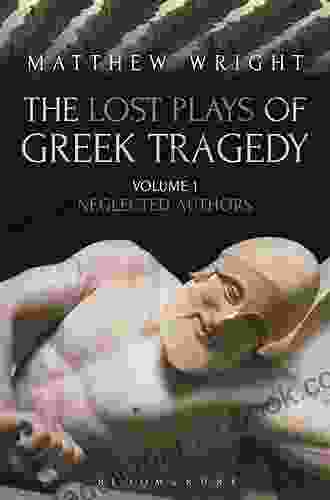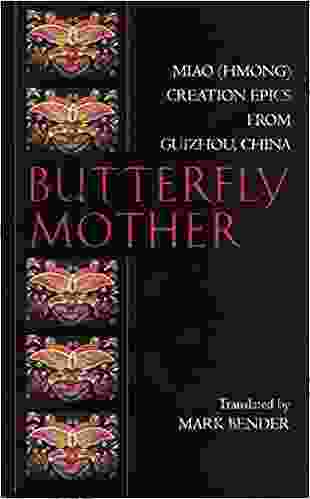Techniques for Achieving Luminous Color and Ultrarealistic Effects: A Comprehensive Guide for Artists

In the realm of fine art, capturing the essence of light and creating illusions of depth and realism is a highly sought-after skill. Artists have employed various techniques throughout history to achieve these coveted effects, leading to masterpieces that have captivated and inspired generations.
Achieving luminous color and ultrarealistic effects requires a combination of meticulous observation, technical proficiency, and a deep understanding of the principles of light, color, and perspective.
4.7 out of 5
| Language | : | English |
| File size | : | 37828 KB |
| Text-to-Speech | : | Enabled |
| Screen Reader | : | Supported |
| Enhanced typesetting | : | Enabled |
| X-Ray | : | Enabled |
| Word Wise | : | Enabled |
| Print length | : | 424 pages |
Understanding the Nature of Light
Light is the fundamental element that shapes our perception of the world. It interacts with objects in complex ways, creating highlights, shadows, and reflections. Artists must have a keen awareness of how light behaves in different contexts to accurately depict form and depth.
The quality of light varies depending on the time of day, weather conditions, and the nature of the light source. Natural light, such as sunlight, is often characterized by its warm, diffused quality, while artificial light, such as fluorescent bulbs, tends to be cooler and more directional.
Color Theory and Pigments
Color is a powerful tool that artists use to convey depth, create optical illusions, and evoke emotions. Understanding color theory is essential for achieving luminous color and ultrarealistic effects.
The color wheel is a fundamental tool in color theory. It organizes colors into three primary colors (red, yellow, and blue),three secondary colors (orange, green, and violet),and six tertiary colors (red-orange, yellow-orange, yellow-green, blue-green, blue-violet, and red-violet).
The judicious use of complementary colors, which are colors that sit opposite each other on the color wheel, can create vibrant and dynamic compositions. Additionally, artists can manipulate the opacity and intensity of pigments to control the luminosity of their colors.
Techniques for Creating Luminous Color
There are several techniques that artists can employ to achieve luminous color:
- Layering and Glazing: By applying thin, transparent layers of paint over one another, artists can build up depth and luminosity. Each layer allows the underlying colors to interact and create subtle color variations.
- Impasto: This technique involves applying thick, textured layers of paint to create a sense of depth and texture. The raised paint surfaces catch and reflect light, enhancing the overall luminosity of the artwork.
- Underpainting: Starting with a monochrome underpainting in a warm or cool color can create a strong tonal foundation for the painting. Subsequent layers of color can then be applied over the underpainting, resulting in a heightened sense of depth and luminosity.
Techniques for Creating Ultrarealistic Effects
Ultrarealistic effects require meticulous attention to detail and a keen eye for observation. Some techniques that artists use to achieve ultrarealism include:
- Linear Perspective: This technique involves creating the illusion of depth and distance using straight lines that converge at a single vanishing point.
- Atmospheric Perspective: This technique simulates the effect of atmospheric haze on objects, making distant objects appear less distinct and with reduced contrast.
- Chiaroscuro: This technique involves the dramatic use of light and shadow to create depth and form. Artists carefully balance areas of light and dark to emphasize contrasts and enhance the illusion of three-dimensionality.
Examples of Luminous Color and Ultrarealistic Effects in Masterpieces
Throughout art history, many artists have mastered the techniques of luminous color and ultrarealistic effects. Here are a few notable examples:
- Caravaggio's "The Calling of Saint Matthew": Caravaggio's use of chiaroscuro creates a dramatic and immersive scene, highlighting the luminous figure of Christ against the dark shadows of the background.
- Vermeer's "The Girl with a Pearl Earring": Vermeer's meticulous attention to detail and skillful manipulation of light and color result in a highly realistic and luminous portrait.
- Hopper's "Nighthawks": Edward Hopper's iconic painting captures the stark and lonely cityscape of New York City at night. The use of artificial light creates a sense of isolation and the luminous glow of the diner window draws the viewer into the scene.
Achieving luminous color and ultrarealistic effects in artwork requires a combination of technical skill, artistic intuition, and a deep understanding of the principles of light, color, and perspective. By mastering these techniques, artists can create works of art that transport viewers to other worlds, evoke powerful emotions, and inspire a sense of awe and wonder.
Whether it is through the use of layering and glazing, impasto, linear perspective, or chiaroscuro, the pursuit of luminous color and ultrarealistic effects continues to challenge and inspire artists to push the boundaries of artistic expression.
4.7 out of 5
| Language | : | English |
| File size | : | 37828 KB |
| Text-to-Speech | : | Enabled |
| Screen Reader | : | Supported |
| Enhanced typesetting | : | Enabled |
| X-Ray | : | Enabled |
| Word Wise | : | Enabled |
| Print length | : | 424 pages |
Do you want to contribute by writing guest posts on this blog?
Please contact us and send us a resume of previous articles that you have written.
 Top Book
Top Book Novel
Novel Fiction
Fiction Nonfiction
Nonfiction Literature
Literature Paperback
Paperback Hardcover
Hardcover E-book
E-book Audiobook
Audiobook Bestseller
Bestseller Classic
Classic Mystery
Mystery Thriller
Thriller Romance
Romance Fantasy
Fantasy Science Fiction
Science Fiction Biography
Biography Memoir
Memoir Autobiography
Autobiography Poetry
Poetry Drama
Drama Historical Fiction
Historical Fiction Self-help
Self-help Young Adult
Young Adult Childrens Books
Childrens Books Graphic Novel
Graphic Novel Anthology
Anthology Series
Series Encyclopedia
Encyclopedia Reference
Reference Guidebook
Guidebook Textbook
Textbook Workbook
Workbook Journal
Journal Diary
Diary Manuscript
Manuscript Folio
Folio Pulp Fiction
Pulp Fiction Short Stories
Short Stories Fairy Tales
Fairy Tales Fables
Fables Mythology
Mythology Philosophy
Philosophy Religion
Religion Spirituality
Spirituality Essays
Essays Critique
Critique Commentary
Commentary Glossary
Glossary Bibliography
Bibliography Index
Index Table of Contents
Table of Contents Preface
Preface Introduction
Introduction Foreword
Foreword Afterword
Afterword Appendices
Appendices Annotations
Annotations Footnotes
Footnotes Epilogue
Epilogue Prologue
Prologue Summer Flowers
Summer Flowers Jacob Riyeff
Jacob Riyeff F D Soul
F D Soul Allen Pud Deters
Allen Pud Deters Michael Farrell
Michael Farrell Trilussa
Trilussa Bhavesh Ranipa
Bhavesh Ranipa Michael G Munz
Michael G Munz Kelle Z Riley
Kelle Z Riley Charles Kinsey
Charles Kinsey R Bruce Hoadley
R Bruce Hoadley Jeff Jarvis
Jeff Jarvis Jennifer Ellerbee
Jennifer Ellerbee Allie Mccormack
Allie Mccormack Menopausal Marge
Menopausal Marge Jennifer Lapidus
Jennifer Lapidus Andy Clark
Andy Clark Elana Freeland
Elana Freeland Jim Breyfogle
Jim Breyfogle Tristan Sandler
Tristan Sandler
Light bulbAdvertise smarter! Our strategic ad space ensures maximum exposure. Reserve your spot today!
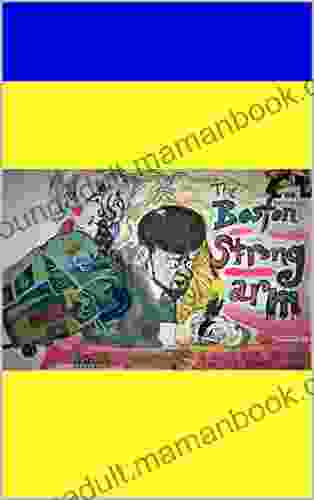
 Brent FosterExploring the Dynamic World of Comics Adapted for the Stage: A Literary and...
Brent FosterExploring the Dynamic World of Comics Adapted for the Stage: A Literary and... Ricky BellFollow ·17.5k
Ricky BellFollow ·17.5k Ross NelsonFollow ·14.5k
Ross NelsonFollow ·14.5k Dion ReedFollow ·18.8k
Dion ReedFollow ·18.8k Jett PowellFollow ·4.1k
Jett PowellFollow ·4.1k James GrayFollow ·14.1k
James GrayFollow ·14.1k Adrien BlairFollow ·11.7k
Adrien BlairFollow ·11.7k Aubrey BlairFollow ·2.4k
Aubrey BlairFollow ·2.4k Devin RossFollow ·2.2k
Devin RossFollow ·2.2k

 Yukio Mishima
Yukio MishimaUnveiling the Zimmermann Telegram: A Pivotal Document in...
The Zimmermann Telegram, a diplomatic...
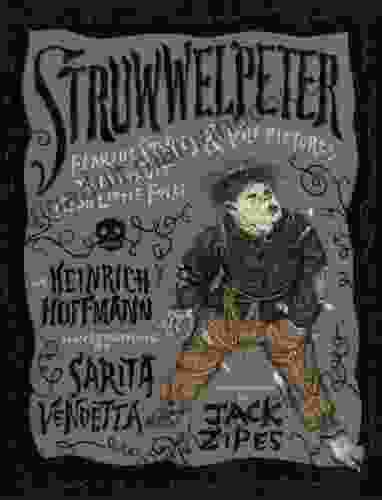
 George Martin
George MartinFearful Stories and Vile Pictures to Instruct Good Little...
In the annals of children's literature, few...
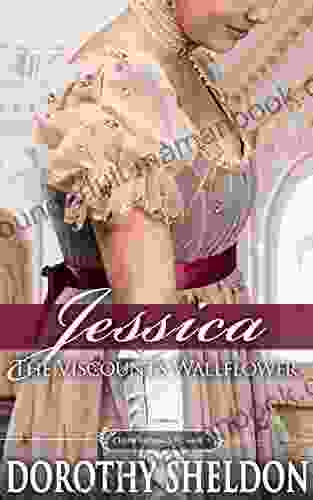
 Grant Hayes
Grant HayesJessica the Viscount Wallflower: A Tale of Transformation...
In the opulent ballrooms and glittering...

 Jerome Blair
Jerome BlairThe Economics of the Global Defence Industry: A...
The global...
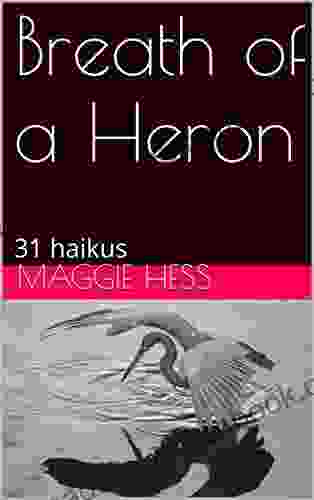
 Blake Kennedy
Blake KennedyBreath of Heron - A Window into the Poetic Depths of...
In the realm of...
4.7 out of 5
| Language | : | English |
| File size | : | 37828 KB |
| Text-to-Speech | : | Enabled |
| Screen Reader | : | Supported |
| Enhanced typesetting | : | Enabled |
| X-Ray | : | Enabled |
| Word Wise | : | Enabled |
| Print length | : | 424 pages |


